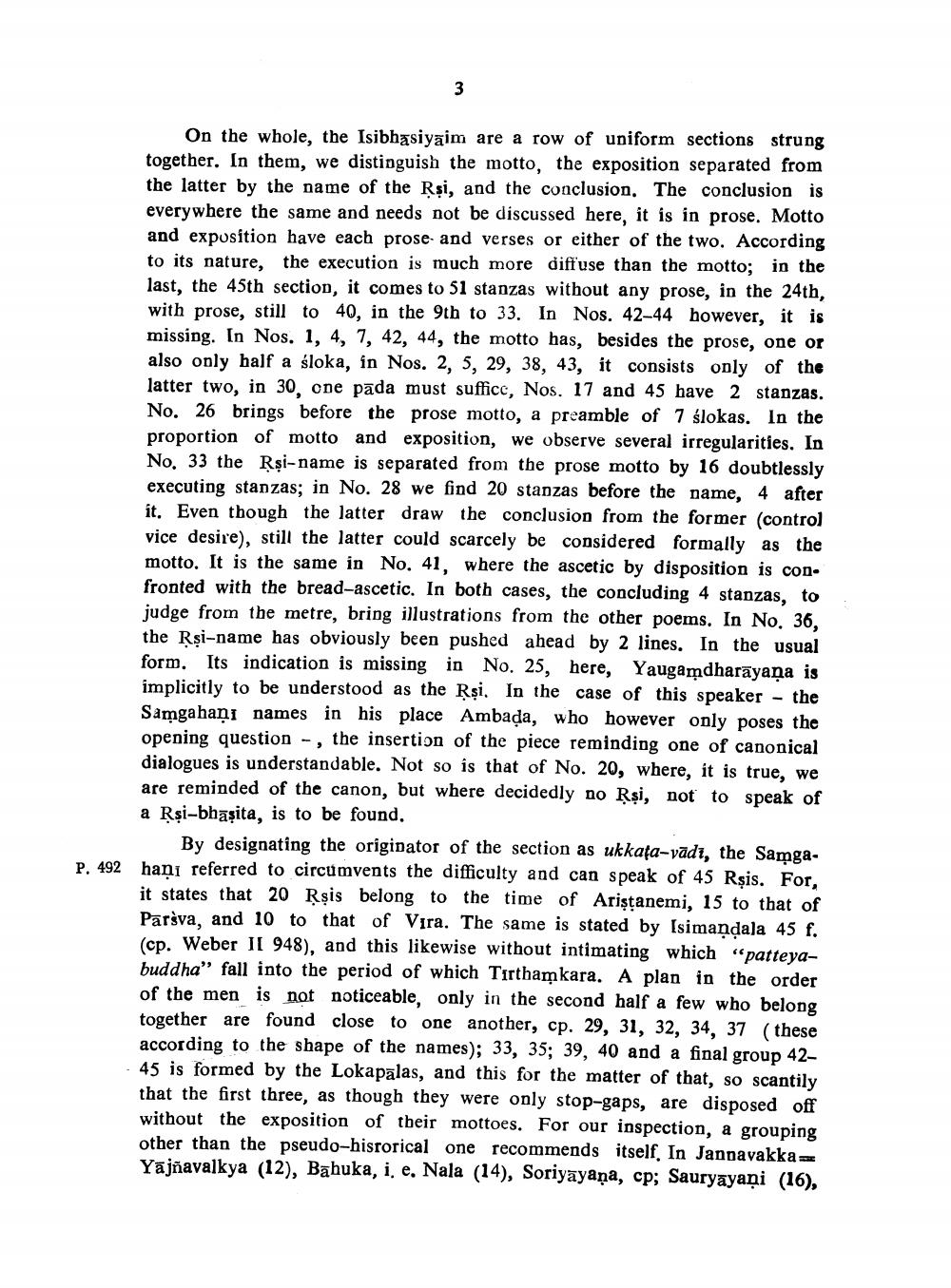________________
3
On the whole, the Isibhgsiygim are a row of uniform sections strung together. In them, we distinguish the motto, the exposition separated from the latter by the name of the Rși, and the conclusion. The conclusion is everywhere the same and needs not be discussed here, it is in prose. Motto and exposition have each prose and verses or either of the two. According to its nature, the execution is much more diffuse than the motto; in the last, the 45th section, it comes to 51 stanzas without any prose, in the 24th, with prose, still to 40, in the 9th to 33. In Nos. 42-44 however, it is missing. In Nos. 1, 4, 7, 42, 44, the motto has, besides the prose, one or also only half a sloka, in Nos. 2, 5, 29, 38, 43, it consists only of the latter two, in 30, one pada must suffice, Nos. 17 and 45 have 2 stanzas. No. 26 brings before the prose motto, a preamble of 7 slokas. In the proportion of motto and exposition, we observe several irregularities. In No. 33 the Rşi-name is separated from the prose motto by 16 doubtlessly executing stanzas; in No. 28 we find 20 stanzas before the name, 4 after it. Even though the latter draw the conclusion from the former (control vice desire), still the latter could scarcely be considered formally as the motto. It is the same in No. 41, where the ascetic by disposition is confronted with the bread-ascetic. In both cases, the concluding 4 stanzas, to judge from the metre, bring illustrations from the other poems. In No. 36, the Rși-name has obviously been pushed ahead by 2 lines. In the usual form. Its indication is missing in No. 25, here, Yaugamdharāyaṇa is implicitly to be understood as the Rşi. In the case of this speaker the Samgahan names in his place Ambada, who however only poses the opening question, the insertion of the piece reminding one of canonical dialogues is understandable. Not so is that of No. 20, where, it is true, we are reminded of the canon, but where decidedly no Rai, not to speak of a Rṣi-bhasita, is to be found.
-
By designating the originator of the section as ukkata-vädt, the SamgaP. 492 han referred to circumvents the difficulty and can speak of 45 Rsis. For,
it states that 20 Rsis belong to the time of Aristanemi, 15 to that of Pariva, and 10 to that of Vira. The same is stated by Isimandala 45 f. (cp. Weber 11 948), and this likewise without intimating which "patteyabuddha" fall into the period of which Tirthamkara. A plan in the order of the men is not noticeable, only in the second half a few who belong together are found close to one another, cp. 29, 31, 32, 34, 37 (these according to the shape of the names); 33, 35; 39, 40 and a final group 4245 is formed by the Lokapalas, and this for the matter of that, so scantily that the first three, as though they were only stop-gaps, are disposed off without the exposition of their mottoes. For our inspection, a grouping other than the pseudo-historical one recommends itself. In JannavakkaYajnavalkya (12), Bahuka, i, e. Nala (14), Soriyayana, cp; Sauryayani (16),




